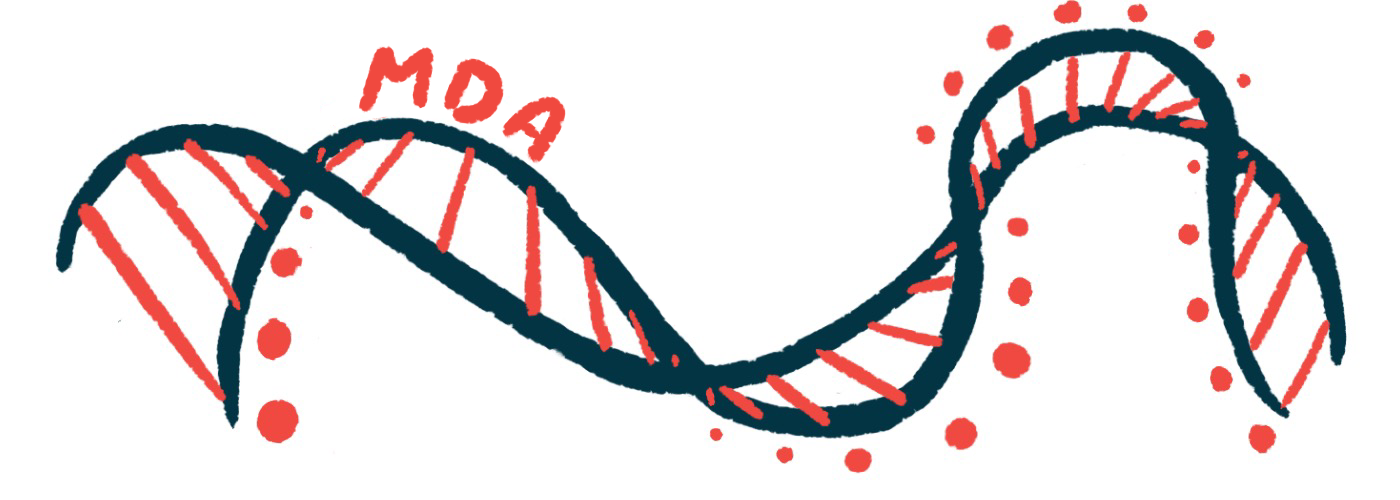MDA 2024: Zolgensma gene therapy safe in children up to 21 kg
SMART tested Zolgensma in 24 children with SMA weighing more than 8.5 kg
Written by |

The one-time gene therapy Zolgensma (onasemnogene abeparvovec-xioi) didn’t cause any unexpected safety issues among children with spinal muscular atrophy (SMA) who weighed up to 21 kg (about 46 pounds) in a Phase 3b clinical trial, and most had stable or improved motor function a year after treatment.
That’s according to the poster, “Safety and Efficacy of Intravenous Onasemnogene Abeparvovec in Pediatric Patients with Spinal Muscular Atrophy: Findings from the Phase 3b SMART Study,” which was presented at the 2024 Muscular Dystrophy Association (MDA) Clinical and Scientific Conference in Orlando, Florida. The work was funded by Novartis Gene Therapies, which sells Zolgensma.
SMA is caused by mutations in the gene SMN1 that result in the progressive death and dysfunction of the nerve cells needed for movement. Zolgensma delivers a healthy copy of the SMN1 gene to cells. In clinical trials, it’s been proven to slow or stop the progression of SMA, especially when given early in the disease’s course.
Zolgensma is widely approved. It’s authorized in the U.S. for those younger than 2 years, while approvals in the European Union and Canada cover children of any age weighing up to 21 kg. The first Zolgensma trials specifically enrolled patients weighing no more than 8.5 kg (about 19 pounds) and there have been concerns about safety issues with the therapy in older, heavier patients. Zolgensma is dosed by weight, so heavier patients require higher doses.
Safety data shows no concerns with Zolgensma
The Phase 3b trial SMART (NCT04851873) tested Zolgensma in 24 children with SMA who weighed more than 8.5 kg, with the heaviest weighing 21 kg. At the time Zolgensma was given, the children ranged in age from about 18 months to 9 years.
Most had received other SMA treatments; 19 had been on Spinraza (nusinersen) and two on Evrysdi (risdiplam), but they had to discontinue other therapies before entering SMART. Only three patients hadn’t received any treatment before entering the study.
A year after treatment with Zolgensma, safety data didn’t reveal any unexpected concerns and the findings were similar for those of all weights. All the patients had at least one side effect related to Zolgensma. Most had elevated liver enzymes (a sign of liver damage) and/or reduced counts of cell fragments called platelets that help the blood clot, which are well-known side effects of the gene therapy. These side effects were managed with supportive care and didn’t lead to any notable long-term issues in all the patients.
“The observed safety profile of [Zolgensma] was similar across the different weight groups and no new safety signals were observed,” the researchers wrote.
All 24 children in SMART could sit with slight support when they entered the study. A year after Zolgensma, all but one was still able to sit with slight support. All six children who could walk at the start of the study were still able to walk a year after Zolgensma.
A few children hit new motor milestones after Zolgensma. Three were newly able to stand with assistance, one was newly able to stand alone, and one was newly able to walk with assistance.
In most, standardized measures of motor function improved or were stable a year after Zolgensma, though there were a few outliers who saw some motor function worsen.
“Across all assessed efficacy measures, most patients demonstrated maintenance or improvement of motor function at Week 52, suggesting clinical benefit of [Zolgensma] for heavier patients with SMA, and for patients switching from [Spinraza or Evrysdi],” the scientists said.







